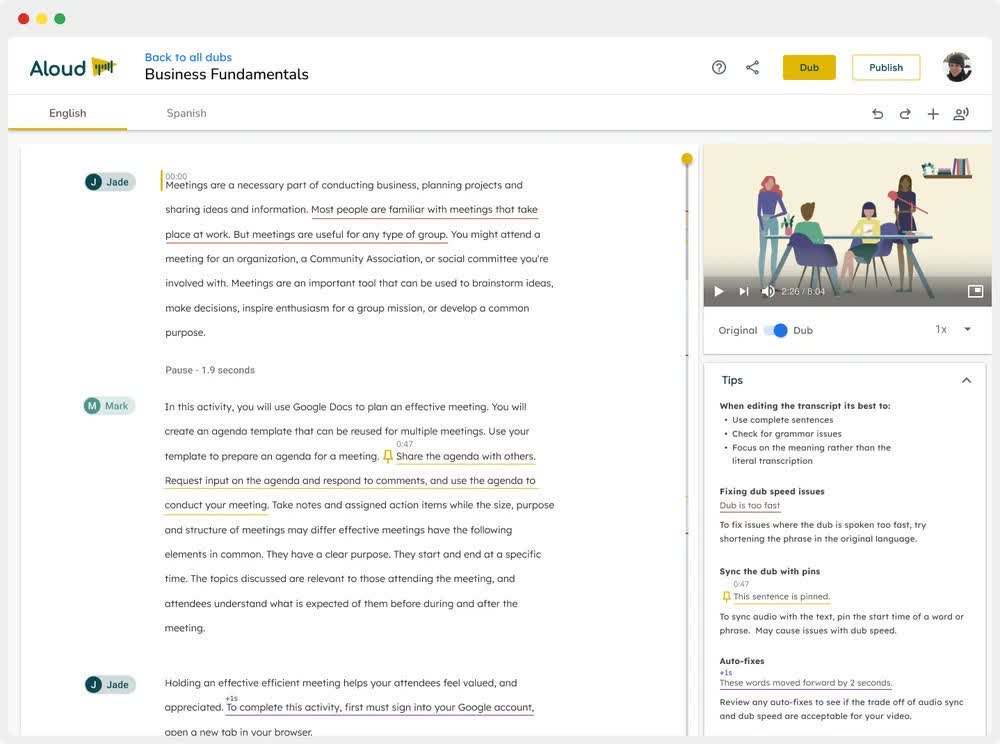Forward-looking: YouTube has been testing ways to offer videos with multiple audio languages for at least a couple of years. As the company intensifies these efforts, one method involves using artificial intelligence to translate and then synthesize speech in different languages, saving time and resources compared to manual dubbing.
YouTube recently announced plans to support a group that helps creators quickly produce audio translations for videos using AI. The initiative will likely complement the company's ongoing development of functionality to enable multiple audio tracks in videos.
The project, called Aloud, grew out of Google's Area 120 incubator last year. It works by machine translating a video's subtitle track and speaking the translation with a voice synthesizer.
If a video has no official subtitles, the tool can auto-transcribe speech and let a human proof the text before starting the translation process. Moreover, creators can use it without knowing the language they're translating into. Currently, Aloud supports Spanish and Portuguese, with Hindi, Indonesian, and more on the way. YouTubers can sign up for Early Access at the project's website.

According to The Verge, YouTube made the announcement at VidCon Anaheim this week that it's putting its weight behind Aloud, confirming that hundreds of creators are currently testing the feature. Next year, the company plans to improve Aloud so that dubs match the speaker's voice with better lip sync.
YouTube previously revealed efforts to facilitate dubbing by introducing the ability to publish videos with multiple audio tracks. Testing began in 2021, eventually supporting multiple Indian languages and including videos from some of the most popular creators.
Third-party companies have been helping YouTubers reach wider global audiences by publishing dubs as separate videos since before the platform started officially endorsing them. Because most creators can't afford the services of movie and TV dubbing companies, a multimillion-dollar industry of middle-budget translators has emerged to fill the gap.
Aloud could become an alternative method to produce dubs more quickly and cheaply. Machine translation can have accuracy-related shortcomings, but the sheer amount of content on YouTube that could potentially benefit from dubbing is likely far beyond what professional translators can reach. If the technology improves, it could be one of multiple methods to expand a channel's reach.